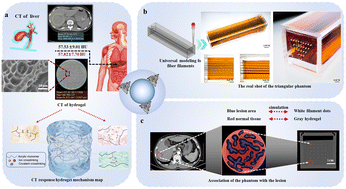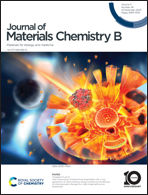A novel CT-responsive hydrogel for the construction of an organ simulation phantom for the repeatability and stability study of radiomic features†
Abstract
Radiomic features have demonstrated reliable outcomes in tumor grading and detecting precancerous lesions in medical imaging analysis. However, the repeatability and stability of these features have faced criticism. In this study, we aim to enhance the repeatability and stability of radiomic features by introducing a novel CT-responsive hydrogel material. The newly developed CT-responsive hydrogel, mineralized by in situ metal ions, exhibits exceptional repeatability, stability, and uniformity. Moreover, by adjusting the concentration of metal ions, it achieves remarkable CT similarity comparable to that of human organs on CT scans. To create a phantom, the hydrogel was molded into a universal model, displaying controllable CT values ranging from 53 HU to 58 HU, akin to human liver tissue. Subsequently, 1218 radiomic features were extracted from the CT-responsive hydrogel organ simulation phantom. Impressively, 85–97.2% of the extracted features exhibited good repeatability and stability during coefficient of variability analysis. This finding emphasizes the potential of CT-responsive hydrogel in consistently extracting the same features, providing a novel approach to address the issue of repeatability in radiomic features.

- This article is part of the themed collection: 2023 Journal of Materials Chemistry B HOT Papers


 Please wait while we load your content...
Please wait while we load your content...